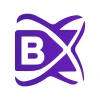1. Static web applications
Static web applications are sites designed to present information to visitors without allowing them to interact with the content beyond reading it. These sites are some of the simplest out there and are generally designed solely as HTML data with a few lines of CSS code.
Surely you have visited the personal site of a designer or professional. In these, visitors rarely have a space to interact with the site and, on the contrary, they are designed to display information.
Sometimes they include integrated images or videos, although by convention it is thought that they should be as simple as possible to differentiate them from other types of web applications.
Static web application example
Mexican photographer Graciela Iturbide's website is a good example of a static web application. On her site, she only presents information on her most important projects, some biography lines and a series of her most popular photos taken over the years.
Your site is purely descriptive and visitors can only navigate through defined links that connect pages to each other.
Image by Graciela Iturbide
2. Dynamic web applications
Dynamic web applications, as their name indicates, are sites on the network that do not remain static over time and, on the contrary, are in a constant process of updating that means that there is different content each time they are accessed. they visit.
These applications can be really simple and only change a part of the site after each update or change completely when someone visits them. These sites are especially good for online stores that need to constantly update their stock, and even their prices.
If websites stand out for remaining identical all the time, dynamic ones make it easy to update them manually, as they are accompanied by databases that offer constant and real-time information. But for this they require more programming, both with HTML and CSS as well as with PHP, JavaScript or Asp.
Example of dynamic web application
Social networks are excellent examples of what dynamic online application programming can achieve. Web applications such as Facebook, Twitter or LinkedIn offer a new experience to their users at every moment. Simply refresh the home page or return to the portal home for the system to load completely new results.
Also, even if the page returns the same results, you will notice that the time of publication, the data of view and the reactions of your contacts will have changed. This is because the site is being updated all the time thanks to the databases that feed it.
LinkedIn Image
3. E-commerce web applications
E-commerce web application development company are one of the most popular applications in the digital market today. This is because more and more companies and people prefer to use digital platforms to market their goods. But just because something is popular doesn't mean it's simple.
An e-commerce website must be optimized for many things: display a product, describe it and expose its main features; allow products to be added or removed; manage customer payment; generate electronic invoices and even have a good design and contact tools such as forms and live chat.
On the other hand, a good e-commerce website must be a dynamic web application at the same time. This is because those brands that sell products online must always keep the availability of their merchandise, costs and consultation information up to date.
Example of e-commerce web application
Online retail stores are the most common example of this type of web application development. Companies with a large international presence, such as Amazon or Mercado Libre, have sites that are constantly updated, include security certificates and respond to visitors with payment options and management of their purchases.
These applications are really complex; They require large databases and constant maintenance, since there is interaction between the system and the client, and this modifies the application values uninterruptedly.
Image from MercadoLibre
4. Content management web applications
CMS, also known as content management systems, are a type of web application accessible from a browser. They are used to manage the content displayed on a website, as well as on each of its pages.
With these tools it is really easy to edit texts for blogs, integrate images and videos within a publication, or even edit your pages in web development windows with HTML or CSS.
As such, these applications function as intermediaries between you and your website. For this reason, they are optimized with all the necessary tools so that your contents are updated and in the best condition to be published on your site.
Content Management Web Application Example
The HubSpot CMS is one of the best web tools designed to make managing your content a much simpler and more complete task.
Complementary resourcesYou just have to register on the platform to access, through your browser, a large number of options for designing marketing strategies, writing content and even generating reports on visits to your site.
As you can see, these applications have really complex tools that are designed like any other mobile application or computer program, with the difference that they are accessible through your browser.
Image from HubSpot
5. Single Page Web Applications
Although it is common for web applications and sites to protect a significant number of pages, there are some others that only operate through a constantly updated page.
This means that all actions you perform on a site are carried out in the same window. Although this may seem like a very complex task - due to the loading time and volumes of information - the truth is that once the site has loaded, navigation is fast, efficient and simple.
Some social networks operate this way. In them you can notice that the same menu icons remain in the same place, no matter which section you access.
Single Page Web Application Example
An example of a dynamic web application are the pages of some of the most popular email media, such as Gmail and Outlook. In these applications you access from the first moment to a window that will remain the same during your navigation.
The information displayed will only change when you select your inbox, whether unread or sent emails. But you can go back to where you were or reopen one of your trays quickly, since the contents have been loaded within the same site and not on a server from which the information is transferred with each click.
Gmail Image
6. Portal Web Apps
Another web application format is one in which, as opposed to single-page websites, the same portal functions as a matrix that redirects the visitor, through links, to other pages. These types of applications are especially useful when the same site contains information or functionalities of many types that need to be classified into easily accessible categories.
If, for example, a company offers a large number of services, it is best to have a page that functions as an access portal to the multiple sections of the site.
Some of these pages may also be limited to only be accessible to certain users or subscribers.
Portal web application example
Have you ever scrolled to the bottom of the main page of a web portal? It is common for large corporations, in addition to including a menu at the top, to choose to create a secondary one, which lists options that are not of interest to all visitors, but that offer relevant consultation information.
Such is the case of the IKEA online store. Its main page works as a portal to access many other sections of the same site: customer service, about us, contact information, access to social networks and other services of interest. As you can see in the image, these links redirect the user to pages and platforms outside the site, as well as some within the same domain.
IKEA image
7. Progressive Web Apps
For some years there has been a clear trend to migrate web applications to mobile formats. Many of the tools that until a decade ago we could use from a website have changed to the application format, which can only be downloaded from official app stores.
To mitigate this phenomenon, some mobile applications have opted to integrate the browsing experience and use of the platforms through interfaces that you remember or that adjust to the mobile user experience. That is why they are known as progressive web applications.
This helps those who cannot access application stores to become familiar with ecosystems of this type. Also for brands to continue promoting their graphic and browsing identity, whether it occurs within a browser, a web application or installed software.
Progressive Web App Example
There are many examples of progressive web applications. All you have to do is sit down to work at your computer to access tools that we use every day and that replicate the work format in web applications, such as Spotify, Slack, Airtable or Google Docs. But if any of them stands out for not being able to be downloaded as an application on computers, it is Netflix.
The policy of this entertainment company is to offer the same experience through its downloadable applications on tablets and phones as through websites that do not accept these store applications.
For example, Apple's AppStore does not have a downloadable version of the popular streaming platform, but if you access the site through browser tricks, you will find an interface very similar to what you would see from an iPad or iPhone. .


